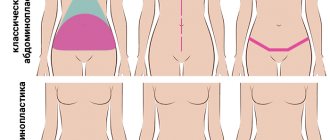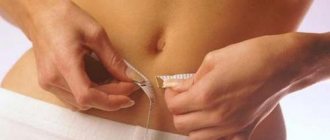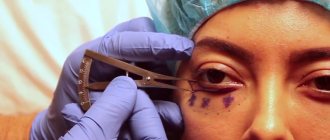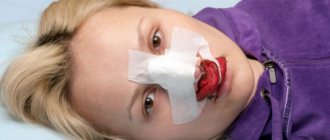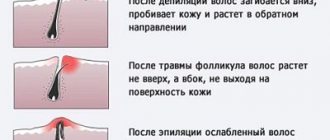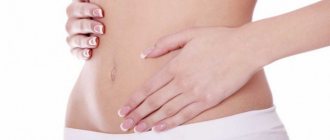A tummy tuck, also known as abdominoplasty, is a surgical procedure to remove excess skin and fat to reduce and tighten the abdomen. Tummy tuck is most popular among women who have recently gone through childbirth, as pregnancy can radically change the appearance of the abdominal area. Abdominoplasty will tighten the abdominal muscles, which are usually weakened as a result of pregnancy. Both men and women who have recently lost weight resort to surgery.
Preoperative consultations
During preoperative consultations, the patient discusses medications, supplements, and medical history with the doctor. Both of these aspects must be considered in order to assess the risks of developing potentially dangerous blood clots and excessive bleeding during surgery. Smokers should stop consuming all types of nicotine at least three months before surgery and continue to abstain during recovery.
Many patients do not realize that nicotine can seriously reduce the body's ability to heal itself.
Smoking interferes with the normal functioning of very important functions: the ability of cells to divide and grow, and the ability of white blood cells to neutralize bacteria that can lead to infections. Nicotine causes blood vessels to constrict, making it difficult for red blood cells to deliver oxygen to the skin cells at the incision site. When oxygen delivery is suppressed, it can significantly delay healing. Additionally, if white blood cell function is impaired, the patient is much more likely to develop an infection, which can lead to serious complications.
To minimize the risk of developing blood clots, patients will be asked to stop taking birth control at least two weeks before surgery. You should also stop taking anticoagulants, hormones, or supplements such as fish oil to minimize bleeding during surgery.
Understanding the entire abdominoplasty process from preoperative planning to complete recovery can play an important role in the success of the operation.
This knowledge can help patients feel confident in their decision and help them achieve the best results.
Rehabilitation after abdominoplasty
A tummy tuck almost always involves removing excess skin, fat and other tissue, along with tightening the underlying abdominal muscles. This requires inner and outer healing.
The extent of surgery is a determining factor in determining the recovery time required after the procedure.
There are three main types of abdominoplasty:
- mini,
- standard,
- extended.
A mini tummy tuck focuses on the area below the belly button. The surgery typically involves an incision between the hip bones, some tightening of the abdominal wall, and removal of excess fat and skin. After surgery, only about a week of avoiding physical activity is required before patients can resume normal activities.
A standard abdominoplasty is similar to a mini tummy tuck, but may involve intervention above the belly button. Major abdominoplasty usually involves liposuction and other treatments targeting the fat folds around the waist, known as the “love handles.” Both of these procedures may require weeks of minimal activity after surgery.
Both standard and extended abdominoplasty often require the placement of drainage tubes, which help prevent blood and fluid from accumulating at the incision site. The tubes are usually removed after a few days. Rehabilitation after abdominoplasty will take some time and will not always be pleasant.
Abdominoplasty, especially extended abdominoplasty, is a serious surgical procedure.
The patient will only learn during recovery how often he uses his abdominal muscles every day!
Sutures may be removed 5-10 days after surgery, but may be left in place for 2 weeks or more. Some parts of the incision may heal faster than others, so the surgeon may remove some stitches and leave others in a little longer.
The skin on the abdomen may lose sensitivity. This is a normal consequence of abdominoplasty. Abdominoplasty involves separating the skin from the tissue and redistributing it. This means that some nerves have been cut. The sensations usually return gradually over several months. Sometimes the first feeling in numb areas is itching or tingling. There is a possibility that sensation in the skin will not fully return.
Bruising and swelling are normal after most surgeries. Swelling and bruising gradually disappear. To reduce swelling, the surgeon may recommend massage or physiotherapeutic procedures. Manual massage is possible 3 weeks after surgery.
When a patient leaves the hospital or surgery center, they should receive a list of post-operative instructions and general guidelines for recovery from plastic surgery.
Recovery time after abdominoplasty varies from person to person. The patient may need up to 6 weeks to heal properly if they have undergone an extended abdominoplasty and other surgeries. Another determining factor is the type of activity. If the patient does desk work, he is likely to be able to return to work sooner than the gym teacher or mail carrier.
What's prohibited
To avoid complications in the postoperative period, you should adhere to the specialist’s instructions:
- compliance with bed rest in the first days after surgery;
- complete exclusion of physical activity, as well as movements that strain the muscles of the abdominal wall;
- to avoid seams coming apart, it is important not only to eliminate stress on the abdominal muscles, but also to move around, securing the abdomen with a corset;
- When sleeping, you should bend your legs to prevent skin tension.
Medicines during rehabilitation
Immediately after the procedure, swelling forms in the operated area. The patient may experience throbbing pain. Pain medications will help stop the pain that is interfering with healing.
It is important that the intestines remain able to move after abdominoplasty, so surgeons recommend that patients take laxatives for the first week after surgery. It is necessary to drink plenty of water and/or fruit juices to avoid dehydration, at least 8 glasses a day, or even 16 after liposuction! This is a great help in maintaining regular soft stools. Antibiotics may be prescribed to further reduce the risk of infection. If you are taking birth control, be aware that some antibiotics may interact with them.
It is necessary to measure your temperature regularly! An elevated temperature may indicate an infection.
General recommendations
This operation is a surgical intervention, and the body requires time to recover. So, immediately after plastic surgery on the anterior abdominal wall, it is quite natural for swelling to appear in this area. Also, you may be bothered by aching pain, which can be reduced by taking pills prescribed by the surgeon (no more than once every four hours). If your body temperature rises above 38°C, you should take antipyretics. Only if you follow all the advice of your plastic doctor, you can expect that you will be satisfied with the result - a new, flat tummy!
Limiting physical activity
You should sleep with your head and shoulders in an elevated position for 7-14 days. You can use two or three fluffy pillows to support your head. Some pain medications may cause drowsiness. The body will use energy to repair itself, which can also cause drowsiness. Sleep promotes healing.
Additional pillows can be placed under the knees. This may help prevent some stretching of the new belly.
Depending on the extent of the surgery, minimizing physical activity may be required for 3 days to a week or more.
The patient will be asked to walk a little each day for the first week, increasing the amount of walking in subsequent weeks. Walking helps prevent blood clots and relieves swelling. By performing simple everyday tasks, patients can further reduce their risk of developing blood clots. Of course, a patient who had surgery a few days ago should not be lifting a heavy bag of groceries, but getting up and going to the kitchen to get a glass of water will be helpful.
Surgeons usually allow you to resume training no earlier than 3 weeks or more after abdominoplasty, depending on the extent of the surgery.
Scars after abdominoplasty
During recovery from any degree of abdominoplasty, it is very important to avoid placing any stress on the incisions, which can cause complications such as wound dehiscence and infection.
Scars go through a number of changes during the healing process before they are completely healed, which can take several months. The scars will look unsightly for about 3 months after surgery. They are usually red, thick and raised. If the patient is cold, they turn gray-purple.
It may take up to one year for the scars to smooth out and disappear.
Most doctors take great care in placing the incisions well below the bikini line so that they remain hidden even on the beach! But it is necessary to protect fresh tummy tuck scars from sun exposure.
To help prevent the formation of keloid scars, silicone sheets can be used. Silicone sheet material is used only after the wounds have closed.
Water treatments after surgery
Patients are advised not to take a bath or use a hot tub, as sitting in standing water may encourage incisions to become infected. Swimming should be avoided while the incisions are healing. Some surgeons allow patients to shower 2-3 days after surgery. It is recommended not to remove compression garments or take a shower under a light stream of water. The medications may cause patients to feel dizzy or unsteady in their legs, so caution must be exercised in the shower. Patients can ask someone to help them or simply stay in the bathroom during the procedure.
Recovery at home
The patient, while in the day hospital, continues to visit the doctor who performed the operation. After the stitches are removed after abdominoplasty, for successful rehabilitation it is recommended to wear a corset or compression garments for one and a half to two months. This measure is necessary to prevent the development of complications. It is not recommended to remove compression garments at all during the first two weeks, except when taking a shower. Then it will be possible to remove it only during rest or sleep.
In addition to preventive measures, the doctor will recommend limiting physical activity and nutritious nutrition.
Restoration of working capacity depends on the type of work performed. If the activity is not related to physical activity, then you can start working two to three weeks after the intervention. For work involving physical labor, the rehabilitation period after abdominal abdominoplasty is at least a month.
To speed up the body’s recovery, experts recommend:
- during the first three months, performing special gymnastics. It is necessary to remove strength training, fitness, and weight lifting from the complex;
- stick to a diet. You should eat food in small portions, eliminating foods that promote gas formation from your diet;
- Avoid taking medications during the recovery period without the recommendation of your doctor, and if there is a need to take them, be sure to check with your doctor.
